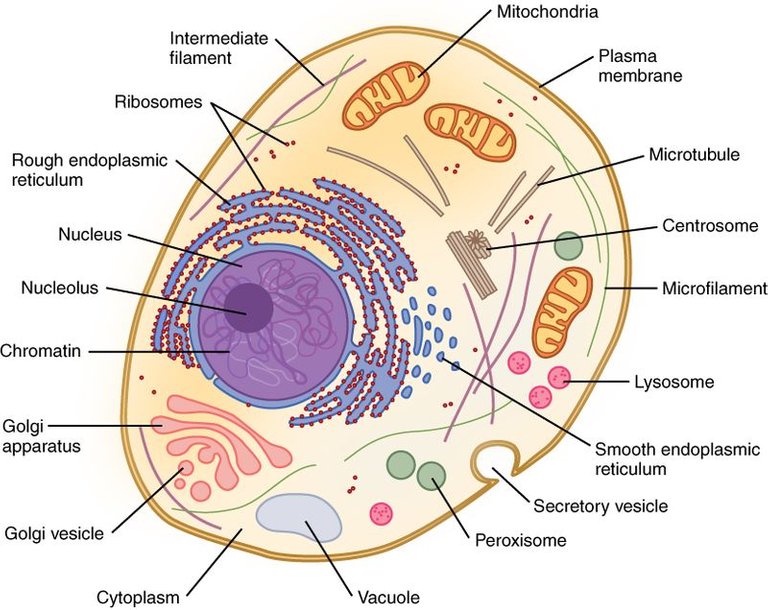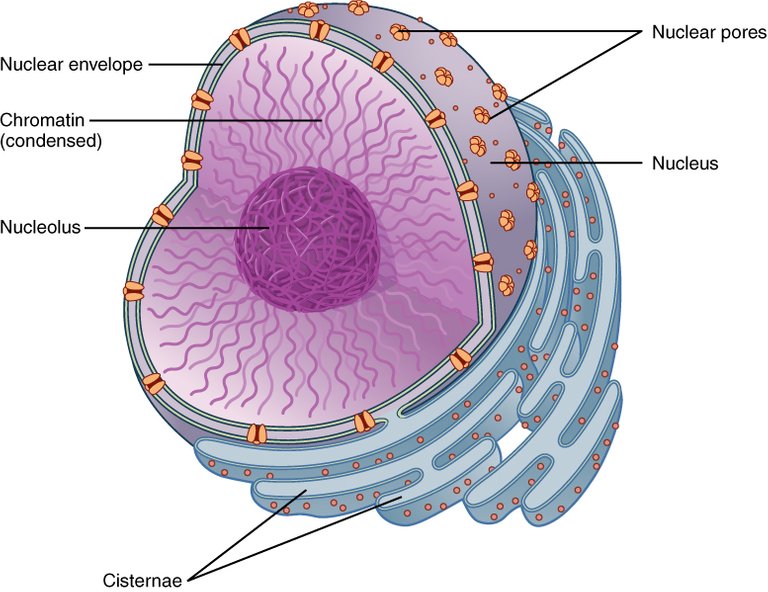The Cell Organelles (concluding part)
In my last post, I started discussing the various cell organelles that are found in a typical prokaryotic cell - the bacteria - and their various functions. It is pertinent to know that many of the organelles shared by both prokaryotic and eukaryotic cells have similar functions but can be different in structure. While some of the organelles are universally present in both cells, some are only limited to a few organisms in the eukaryotic category. For example, only a very few eukaryotic organisms - Chlamydomonas and Euglena, for example - have flagella but the structure remains primarily for locomotive purposes in the organisms.
Before discussing the functions of the organelles of the eukaryotic cell, there is a need to identify the various types of eukaryotic cells that exist.
- The plant cell
- The animal cell
Both cell types are largely similar in structure but also have some key differences which include:
- The presence of cell wall in the plant cell and its absence in the animal cell.
- The presence of chloroplasts in the plant cell and its absence in the animal cell
- The vacuole in the plant cell occupies a large percentage of the cytoplasm unlike in the animal cell

The cell wall of the plant cell
The cell wall of the plant cell shares some similarity in terms of functionality and structural components with the cell wall of prokaryotic cells. It is largely made up of polysaccharides; cellulose, hemicellulose, pectin, lignin, and protein. The cell wall is permeable to the movement of materials in and out of the cell and plays and supportive protective role in the cell.
The Chloroplast
The chloroplast is one of the double-membrane organelles found in the eukaryotic cell. The outer membrane is largely permeable to materials while the inner membrane is largely selective to the passage of materials. The organelle is the main site of photosynthesis in green plants. During this process, the radiation from the sun is used as a catalyst to make carbohydrates from inorganic raw materials in the form of water and carbon dioxide.
The inner membrane of the chloroplast is folded to form a stack of flattened discs known as the thylakoid. The latter contains chlorophyll and helps trap radiation from the sun for photosynthesis. The innermost portion of the chloroplast, the stroma is the site of the light-independent reaction of photosynthesis takes place. This is the reaction where carbon dioxide is fixed into carbohydrates.
The plant's vacuole
The vacuole of a typical plant cell takes up to 90 percent of the intracellular space in the cell and contains the cell sap. Hence, vacuoles primarily help plant cells to maintain turgor pressure and responsible for an increase/decrease in cell volume depending on the solute concentration of the surrounding medium of the cell.
Other organelles of the eukaryotic cell
The cell membrane: typically made up of carbohydrates, phospholipids, proteins, and cholesterols and primarily functions to limit the kind and amount of materials that leave or enter the cell. The process by which materials enter and leave the core of the cell is biologically known as membrane transports. The membrane transports can happen through simple or facilitated diffusion and active transport with the latter requiring the expedition of energy in the form of ATP.
The nucleus
This is like the brain of the cell. It is another double-membrane organelle that controls virtually all the cell's metabolic activities. The double membrane has pores for the passage of materials from the nucleus to the cytoplasm, otherwise known as the nuclear pore. Within the core of the nucleus lies the genetic materials of the cell in the form of DNA. The DNA is replicated within the nucleus during the process of cell division while it is transcribed into RNA during the process of gene expression. The transcribed RNA is transported from the nucleus to the cytoplasm where it is translated into protein in association with the ribosome of the cell.
The mitochondrion
This is also a double membrane organelle in which the inner membrane is folded to form a structure known as cristae to provide more surface area for reactions involving oxidative phosphorylation (generation of ATP). The organelle is popularly described as the powerhouse of the cell because all the energy requirements of the cell are generated within it. The innermost portion of the organelle is characterized by the presence of a variety of enzymes, DNA, RNA, and ribosome. Thus, the presence of its own genetic materials makes the mitochondrion behave as a separate entity from the entire cell, a similarity shared by the chloroplast found in the plant cell.

Eukaryotic Ribosome
The eukaryotic ribosome shares several similarities with the prokaryotic ribosome in terms of structure and functionality (that is, the site of protein synthesis). However, they are larger and a bit more complex compared to that of their prokaryotic counterpart. They also consist of two unequal subunits and the entire organelle has a size of 80S. Some of the ribosomes lie freely within the cytoplasm while some are attached to another organelle - the endoplasmic reticulum. Some special ribosomes are found associated with the mitochondrion and chloroplasts.
Endoplasmic Reticulum
The endoplasmic reticulum is a system of flattened membranes that primarily functions as a transporting channel (in conjunction with another organelle - the golgi body) for certain cellular molecules. There are two sub-units of the organelle - the smooth unit and the rough unit. The former is ribosome free while the latter has ribosomes attached to its surface. Hence, the rough appearance. Apart from transportation, the endoplasmic reticulum is also important in the synthesis and folding of the proteins in order to achieve the desired structure.
The Golgi Apparatus
This is also a system of flattened membranes whose main function is to package/process proteins and assist the endoplasmic reticulum in transporting proteins.
Similar articles by the same author
- BIO 101: Cell organelles
- BIO 101: The cell
- BIO 101: classification of living organisms
- BIO 101: origin of life (concluding part)
- BIO 101:origin of life
- BIO 101: Characteristics of life (concluding part)
- BIO 101: Characteristics of life (1)
Resources
- https://www.nature.com/scitable/topicpage/plant-cells-chloroplasts-and-cell-walls-14053956/
- https://www.khanacademy.org/science/high-school-biology/hs-cells/hs-the-cell-membrane/a/structure-of-the-plasma-membrane
- https://teachmephysiology.com/histology/cell-structures/mitochondria/
- https://www.britannica.com/science/endoplasmic-reticulum
- https://en.wikipedia.org/wiki/Eukaryotic_ribosome_(80S)
Thanks for your contribution to the STEMsocial community. Feel free to join us on discord to get to know the rest of us!
Please consider supporting our funding proposal, approving our witness (@stem.witness) or delegating to the @stemsocial account (for some ROI).
Please consider using the STEMsocial app app and including @stemsocial as a beneficiary to get a stronger support.
Congratulations @ummar! You have completed the following achievement on the Hive blockchain and have been rewarded with new badge(s) :
Your next target is to reach 4750 upvotes.
You can view your badges on your board and compare yourself to others in the Ranking
If you no longer want to receive notifications, reply to this comment with the word
STOPCheck out the last post from @hivebuzz: